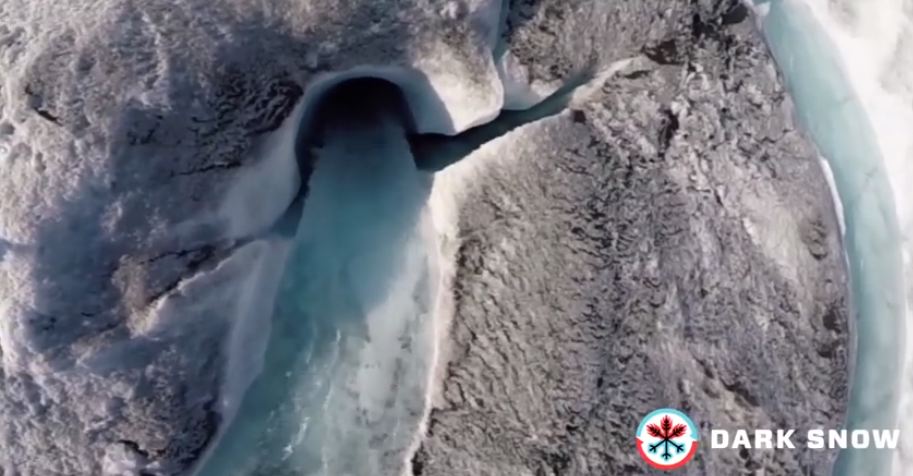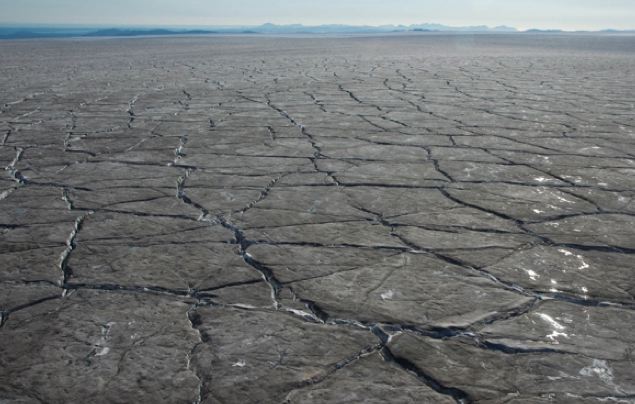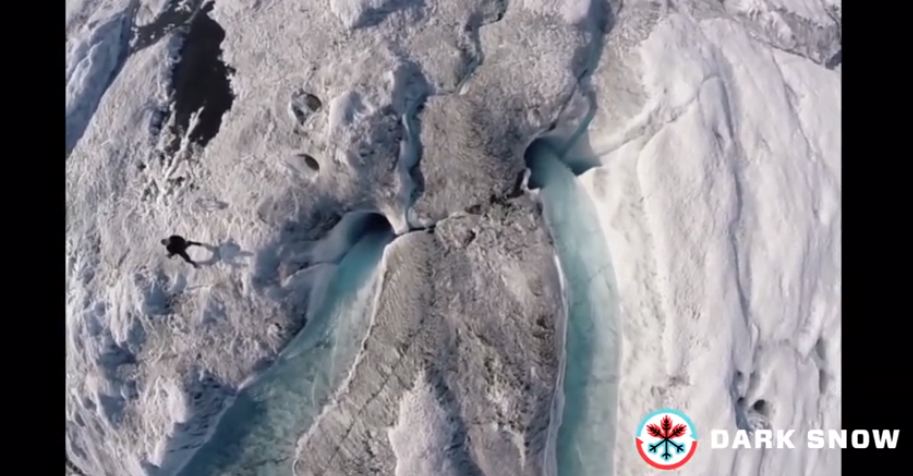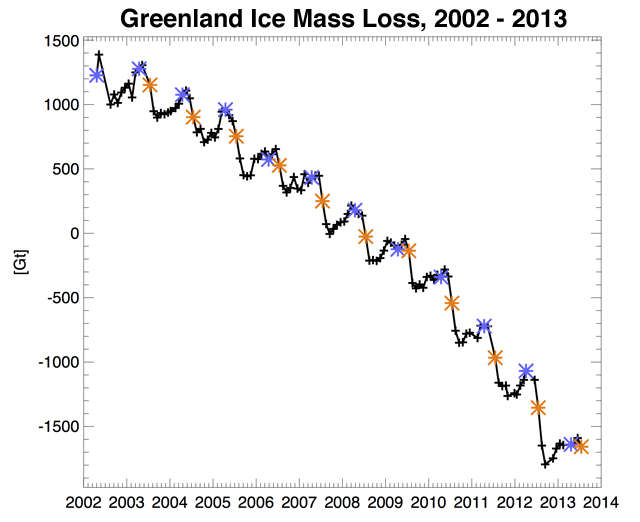Crowdfunding Support for Science
If the Greenland ice sheet took a selfie, it might look like this:
Since Greenland can't take pictures of itself, a group of scientists is sending a few drones aloft so they can see the situation for themselves. In these images, everything that is soot-colored brown/grey is ice. Yes, ice.
There's an old, perhaps apocryphal, story that the Viking Erik the Red named his newly-discovered island Iceland. But then he was dismayed to find that no one wanted to move there because it sounded too unpleasant. So when he discovered a larger island that was even icier than Iceland, he named it Greenland in order to attract unwary settlers. But Greenland was never green, or grey or brown, until now. It was white.
The dark surface absorbs sunlight, making the ice melt faster than scientists predicted. To find out why the ice is dark, Glaciologist Jason Box and his team started the Dark Snow project. Box, who is featured in this week's This Planet video, What Is Dark Snow? (and in the documentary film Chasing Ice), may represent a new kind of scientist-activist. As profiled in this 2013 article from Climate Desk, Box is determined to get out on the ice come hell or high water (literally), and even willing to team up with the likes of Greenpeace:
Box increasingly began to think outside of…his last name. Rather than waiting on funding agencies, he teamed up with Greenpeace on a series of expeditions to document, and also dramatize, the ice sheet’s melting. He also began to set up time lapse cameras to observe the ice as it declines
According to Jeff Masters at Weather Underground, soot from forest fires is one contributor, as he reported here:
Climate change and forest fires synergistically drive widespread melt events of the Greenland Ice Sheet. Their ice core study found that black carbon from forest fires helped caused a rare, near-ice-sheet-wide surface melt event that melted 97% of Greenland's surface on July 11 - 12 2012, and a similar event in 1889. Since Arctic temperatures and the frequency of forest fires are both expected to rise with climate change, the results suggest that widespread melt events on the Greenland Ice Sheet may begin to occur almost annually by the end of century.
Results from Dark Snow’s 2014 summer expedition are revealing something new - that algae is colonizing the surface of the melting ice sheet.
This Dark Snow blog post by team member Karen Cameron explores this discovery, quoting one of the team's scientists, Marek Stibal about the unfortunate color of the algae:
"these guys [the algae] are packed with a dark purple-brown pigment that protects them from sunlight, but also causes the darkening of the ice surface."
FROM: The Heat is on in Greenland: Support the Dark Snow Project By: Dr. Jeff Masters , 2:50 PM GMT on June 25, 2014
Help them at DarkSnow.org
http://darksnowproject.org/#give-now
Masters noted in his Weather Underground article that Dark Snow is "the first crowd-funded Arctic expedition."
We are proud to promote the Dark Snow project. Click here to visit their website which has lots of interesting information, and you can contribute to this venture. Crowd funding allowed the scientists to purchase their drones and is letting them spend time on writing their reports rather than writing grant proposals.
..................................................................................................................................................................................................................................







